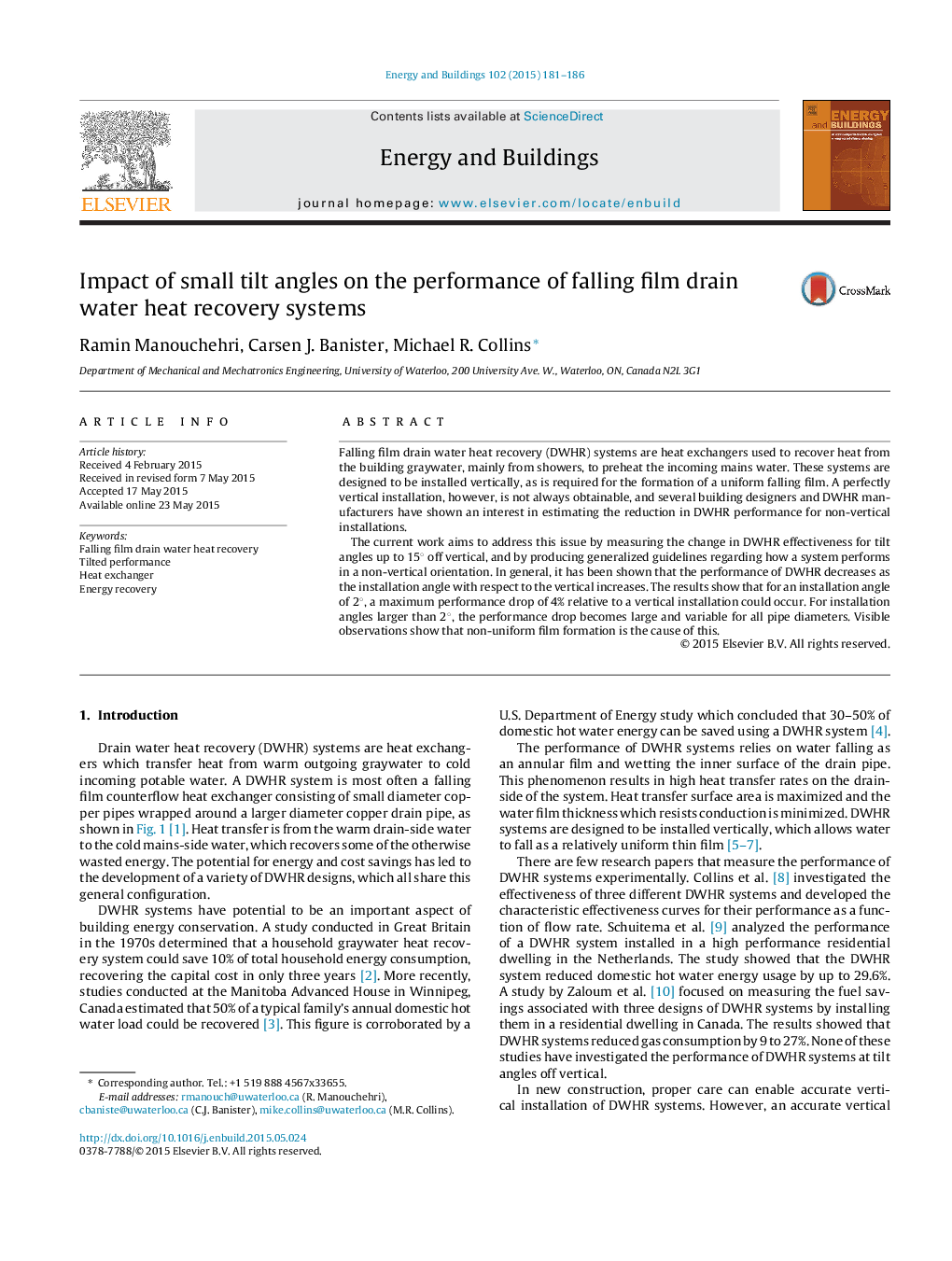| Article ID | Journal | Published Year | Pages | File Type |
|---|---|---|---|---|
| 262532 | Energy and Buildings | 2015 | 6 Pages |
•Multiple drain water heat recovery systems were tested at various tilt angles.•Tilt angles were 0°, 2°, 5°, 10° and 15° from vertical.•Minor performance drop at a 2° tilt angle from vertical.•Significant performance drops at tilt angles larger than 2° from vertical.•Performance drop is due to delamination and uneven film thickness.
Falling film drain water heat recovery (DWHR) systems are heat exchangers used to recover heat from the building graywater, mainly from showers, to preheat the incoming mains water. These systems are designed to be installed vertically, as is required for the formation of a uniform falling film. A perfectly vertical installation, however, is not always obtainable, and several building designers and DWHR manufacturers have shown an interest in estimating the reduction in DWHR performance for non-vertical installations.The current work aims to address this issue by measuring the change in DWHR effectiveness for tilt angles up to 15° off vertical, and by producing generalized guidelines regarding how a system performs in a non-vertical orientation. In general, it has been shown that the performance of DWHR decreases as the installation angle with respect to the vertical increases. The results show that for an installation angle of 2°, a maximum performance drop of 4% relative to a vertical installation could occur. For installation angles larger than 2°, the performance drop becomes large and variable for all pipe diameters. Visible observations show that non-uniform film formation is the cause of this.
